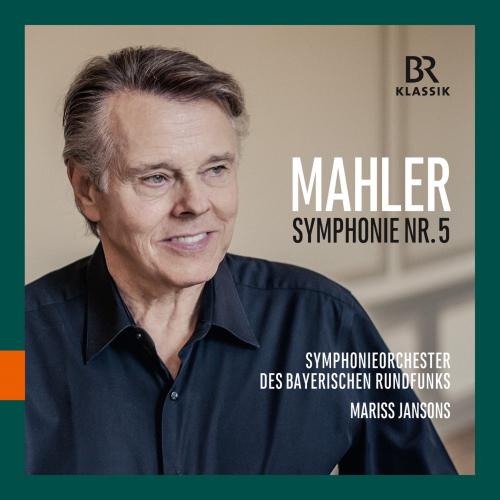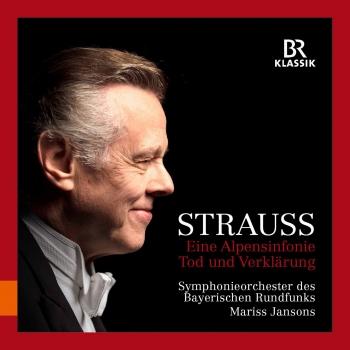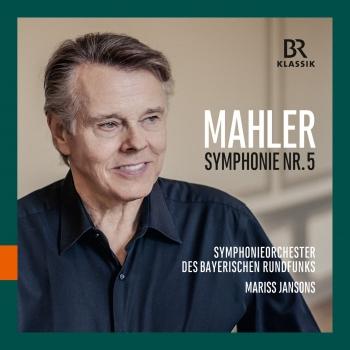
Mahler: Symphony No. 5 (Live) Symphonieorchester des Bayerischen Rundfunks & Mariss Jansons
Album info
Album-Release:
2017
HRA-Release:
04.08.2017
Label: BR-Klassik
Genre: Classical
Subgenre: Orchestral
Artist: Symphonieorchester des Bayerischen Rundfunks & Mariss Jansons
Composer: Gustav Mahler (1860-1911)
Album including Album cover Booklet (PDF)
- Gustav Mahler (1860 - 1911): Symphony No. 5:
- 1 I. Trauermarsch 12:50
- 2 II. Stürmisch bewegt, mit größter Vehemenz 15:49
- 3 III. Scherzo 19:26
- 4 IV. Adagietto 08:52
- 5 V. Rondo-Finale 16:33
Info for Mahler: Symphony No. 5 (Live)
All Mahler scholars have agreed from the very start that Gustav Mahler embarked on an entirely new path with his Fifth Symphony. Even for his immediate contemporaries, such as the conductor Bruno Walter or the music critic Paul Bekker, the Fifth marked the beginning of a new creative phase, and Mahler himself was also keenly aware of this – which is why he was all the more upset by the fact that his work was not understood at its premiere in Cologne in October 1904 and, even later, met with a largely negative reception. In 1905, following an unsuccessful performance in Hamburg, the composer complained: "The Fifth is an accursed work. No-one understands it.” It was only after Mahler’s death in May 1911 that people slowly began to appreciate the piece.
The Fifth ranks today as one of Mahler's most popular symphonies. This is due in part to Luchino Visconti's 1971 film adaptation of Thomas Mann's novella ‘Death in Venice’, which used the symphony’s world-famous Adagietto to great effect: the movement enjoyed unanimous approval from the very start, and has now advanced to become Mahler's ‘greatest hit’ and the most famous work in his entire oeuvre.
In its structure, the symphony does not follow the classic four-movement form, but presents us with five movements in three sections. Conceptually, Mahler relies on methods he had already tried and tested in the work’s great predecessors, the Second and Third Symphonies. The centerpiece of the work is a lengthy scherzo full of grotesque humour, inspired by Jean Paul, while its resting-point is the Adagietto, which certainly bears many of the hallmarks of Mahler's slow movements. The harsher sound of this symphony ushered in a new creative phase for Mahler – one that he developed further in the Sixth. The maximum use he makes of the tonal means available already clearly anticipates the Ninth, in which he begins to abandon tonality altogether and encompass the transcendental aspect of the music. This Munich concert event of March 2016, now released as a CD by BR KLASSIK, is an outstanding interpretation of one of the most important compositions of the international symphonic repertoire of the early 20th century.
Gustav Mahler himself feared that the ‘chaos!’ In his Fifth Symphony would deeply unsettle his audiences.
The work has long since become popular, and the Adagietto has even become Mahler’s ‘greatest hit’. Experience Mahler’s ‘universe of sound’ with Jansons and his orchestra.
Symphonieorchester des Bayerischen Rundfunks
Mariss Jansons, conductor
Live recording: München, Philharmonie im Gasteig, 10.-11.03.2016
Mariss Jansons
son of conductor Arvıds Jansons, was born in Riga in 1943. He studied violin, piano, and conducting at the Leningrad Conservatory, completing his education as a student of Hans Swarowsky in Vienna and of Herbert von Karajan in Salzburg. In 1971 he became a laureate of the Karajan Competition in Berlin and began his close partnership with the St. Petersburg Philharmonic, first as an assistant to Yevgeny Mravinsky and then as a permanent conductor. From 1979 to 2000 Jansons served as Music Director of the Oslo Philharmonic Orchestra. Under his tenure, the orchestra earned international acclaim and undertook tours to leading concert halls around the world. Between 1997 and 2004 he was Principal Conductor of the Pittsburgh Symphony Orchestra, and in the 2003–2004 season he took over leadership of the Bavarian Radio Symphony Orchestra, where he is extending his contract until 202; he began his tenure as head of the Royal Concertgebouw Orchestra in the 2004–2005 season, and ended it in 2015. Jansons is guest conductor of the Berlin and Vienna Philharmonic Orchestras (in Vienna in 2016 he will be conducting the New Year’s concerts for a third time); he has additionally conducted the leading orchestras in the U.S. and Europe. His discography comprises many prizewinning recordings, including a Grammy for his account of Shostakovich’s 13th Symphony. Mariss Jansons is an honorary member of the Society of Friends of Music in Vienna and of the Royal Academy of Music in London; the Berlin Philharmonic has honoured him with the Hans-von-Bülow Medal, the City of Vienna with the Golden Medal of Honour, and the State of Austria with the Honorary Cross for Science and Arts. In 2006 Cannes MIDEM named him Artist of the Year, and he received the ECHO Klassik Award in 2007 and 2008. In June 2013, for his life’s work as a conductor, he was awarded the prestigious Ernst von Siemens Music Prize, and on 4 October 2013, he was awarded the Federal Cross of Merit 1st Class by German Federal President Joachim Gauck in Berlin. In France in 2015, the Ministry of Culture named Mariss Jansons “Commandeur des Arts et des Lettres“.
Symphonieorchester des Bayerischen Rundfunks
Not long after it was established in 1949, the Symphonieorchester des Bayerischen Rundfunks (Bavarian Radio Symphony Orchestra) developed into an internationally renowned orchestra. The performance of new music enjoys an especially long tradition, and right from the be- ginning, appearances in the musica viva series, created by composer Karl Amadeus Hartmann in 1945, have ranked among the orchestra’s core activities. On extensive concert tours to virtually every country in Europe, to Asia as well as to North and South America, the Symphonieorchester des Bayerischen Rundfunks continually con rms its position in the first rank of top international orchestras. The history of the Symphonieorchester is closely linked with the names of its previous Chief Conductors: Eugen Jochum (1949–1960), Rafael Kubelík (1961– 1979), Sir Colin Davis (1983– 1992) and Lorin Maazel (1993–2002). In 2003, Mariss Jansons assumed his post as new Chief Conductor. With a number of CD releases, among others a series of live recordings of concerts in Munich, Mariss Jansons continues the orchestra’s extensive discography. Maestro Jansons, the Chor and Symphonieorchester des Bayerischen Rundfunks were honoured for their recording of the 13th Symphony of Shostakovich when they were awarded a Grammy in February of 2006 in the “Best Orchestral Performance” category. In December, 2008, a survey conducted by the British music magazine Gramophone listed the Symphonieorchester des Bayerischen Rundfunks among the ten best orchestras in the world. In 2010, Mariss Jansons and the Symphonieorchester des Bayerischen Rundfunks received an ECHO Klassik Award in the category “Orchestra/Ensemble of the Year” for their recording of Bruckner’s 7th Symphony on BR-KLASSIK. The complete Beethoven symphonies, performed by the Symphonieorchester under Mariss Jansons in Tokyo in the autumn of 2012, were voted by the Music Pen Club Japan – the organisation of Japanese music journalists – as the best concerts by foreign artists in Japan in 2012.
Booklet for Mahler: Symphony No. 5 (Live)














